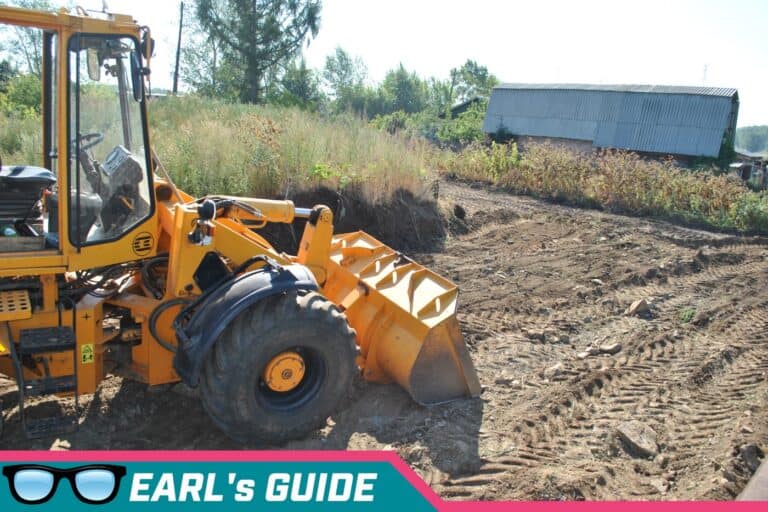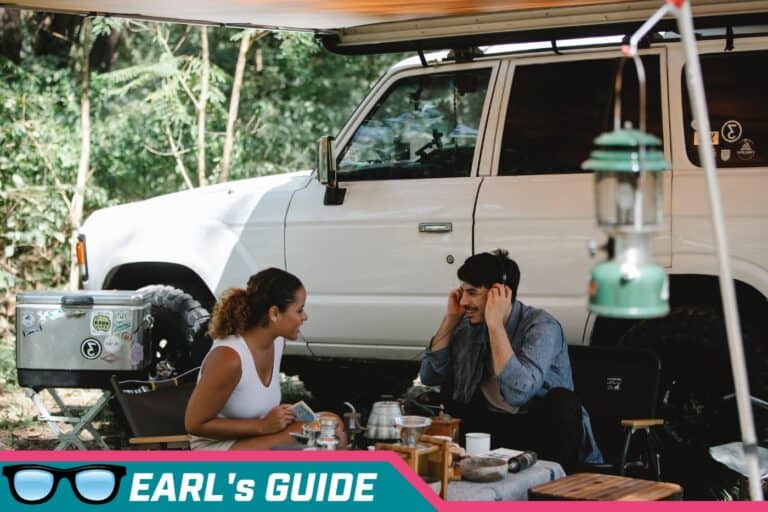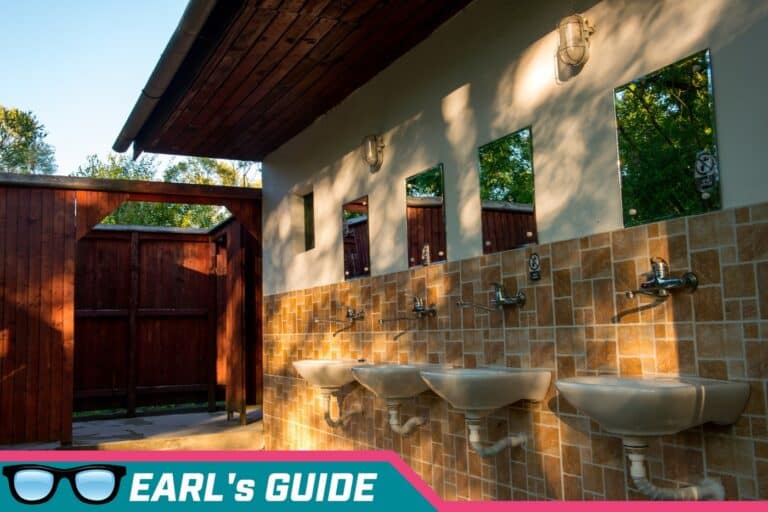Site Design Principles: Maximizing Space Without Compromising Guest Experience
In the fast-evolving world of RV parks, it’s no longer enough just to offer a spot to park. Owners and investors are constantly looking for ways to boost revenue, attract a broader clientele, and create a memorable guest experience. One of the foundational aspects that can profoundly impact these areas is site design. As an RV park management consultant, I’ve witnessed the transformational power of efficient site design, emphasizing maximizing space without compromising on the guest experience. This article will unpack these principles, ensuring that every square foot of your RV park not only earns its keep but enhances the overall guest journey.
1. Understanding the Modern RV Traveler
Before diving into design specifics, it’s crucial to understand the modern RV traveler’s psyche. They’re seeking:
- A blend of community and privacy.
- A sense of connection to nature.
- Modern amenities and connectivity.
- Safety and accessibility.
By keeping these factors in mind, site design can be tailored to meet and exceed these expectations.
2. Strategic Site Layout
a. Zoning: Divide the park into zones. Consider having areas for larger RVs, areas for smaller vehicles, tent zones, communal areas, and utility zones. This zoning helps streamline traffic, reduces congestion, and allows for targeted amenities.
b. Grid vs. Organic Layouts: While grid layouts might maximize space, they can feel cramped and lack character. Consider hybrid designs, merging the efficiency of grids with organic layouts that weave around natural features, creating a blend of order and natural charm.
3. Incorporating Natural Features
Rather than bulldozing natural features, integrate them. Trees, rock formations, ponds, or even elevation changes can add character to the site, offering guests unique spots and viewpoints.
- Buffer Zones: Trees and shrubs can serve as natural dividers, providing guests with a sense of privacy without erecting walls or fences.
- Natural Landmarks: Utilize natural landmarks as focal points, creating communal areas or premium spots that can fetch higher rates.
4. Utility Placement and Accessibility
A critical yet often overlooked aspect is utility placement. Ensure that:
- Connections are easily accessible from parking spots.
- There’s adequate drainage, especially during rains.
- Utility areas, like dumpsters or water connections, aren’t placed next to premium spots or communal areas.
5. Flexible Spot Design
As RV designs evolve, flexibility in spot design ensures that you cater to a broad range.
- Adjustable Spots: Consider spots that can be combined or divided based on the size of the RVs.
- Varied Offerings: Offer different types of spots – from basic ones with just an electric hook-up to premium spots with patios, fire pits, and dedicated WiFi.
6. Traffic Flow and Safety
Efficient traffic flow reduces congestion, ensures safety, and enhances guest experience.
- Wide Paths: Ensure that the main arteries can handle traffic during peak check-in and check-out times.
- Clear Signage: From spot numbers to utility locations, clear signage aids in navigation and reduces guest frustration.
- Pedestrian Safety: Design pedestrian pathways or crossings, especially if you have amenities like pools or restaurants that guests would walk to.
7. Communal Areas and Amenities
While maximizing space, it’s essential not to skimp on communal areas. These are the heartbeats of any RV park.
- Centralized Facilities: Position facilities like laundromats, restrooms, or general stores centrally, ensuring they’re easily accessible.
- Multipurpose Spaces: Design communal areas that can serve multiple functions – a fire pit area that can double up as a performance space or a picnic area that can host local markets.
8. Landscaping and Aesthetics
Maximizing space shouldn’t come at the cost of aesthetics. Thoughtful landscaping can enhance the appeal, create perceived space, and elevate guest experience.
- Elevated Planters: If space is a constraint, consider vertical gardens or elevated planters that add greenery without eating into ground space.
- Strategic Lighting: Well-placed lighting can create a sense of space, highlight features, and ensure safety.
9. Feedback Loop
Lastly, always keep the feedback loop open. Regularly gather guest feedback regarding their experience, especially concerning site design. This feedback is gold, offering insights that can guide tweaks and overhauls.
One of the most pressing questions many owners face is: “What happens when my RV park is almost or entirely full? Will the design support a smooth experience or result in overcrowded chaos?” Especially as modern RVs grow in size and the demand for amenities increases, RV parks must anticipate the challenges of high occupancy and preemptively address them in their site design.
Anticipating Challenges at High Occupancy
- Space Constraints: The most obvious challenge. Older RV parks, in particular, might find their spaces too tight when occupied by modern, larger RVs, causing difficulties in maneuvering and reduced privacy.
- Utility Strain: With every slot occupied, can your park’s utilities (power, water, sewage, and WiFi) handle the demand without faltering?
- Traffic Flow: A full park means more vehicles moving around, especially during peak check-in and check-out times. If pathways and roads aren’t designed adequately, this can cause congestion.
- Amenities Overload: Communal areas, from laundries and bathrooms to pools and playgrounds, will experience maximum usage. If not designed for high capacity, they can become overcrowded.
Design Principles for High Occupancy
- Generous Space Allocation: Design spaces with a buffer. Today’s RVs, often equipped with slide-outs, require more room. If your park’s spaces cater comfortably to the largest RVs, it will accommodate smaller ones with ease.
- Robust Utilities Infrastructure: Plan utilities for a capacity slightly beyond your park’s maximum occupancy. This ensures that even at full capacity, services remain uninterrupted.
- Efficient Traffic Flow: Wide, clear pathways and well-marked signage can facilitate smooth vehicular movement. One-way loops can further ease congestion.
- Modular Communal Areas: Instead of a single large communal area, consider multiple smaller facilities spread throughout the park. This decentralizes crowd concentration.
- Natural Barriers: Use natural elements like trees, bushes, and landscape features to create organic barriers. This enhances privacy without the need for walls or fences, preventing a ‘boxed in’ feeling.
- Dynamic Amenities: Introduce amenities that can expand or contract based on usage. For instance, a multi-purpose hall can serve as both an entertainment center and a relaxation lounge, depending on the need.
- Scheduled Activities: To prevent overcrowding at popular spots, introduce scheduled activities. For instance, having specific pool hours for kids can ensure adults find quiet time for themselves and vice-versa.
Feedback & Iteration
Always keep a feedback mechanism in place. Encourage guests to share their experiences, especially during high occupancy. Their insights can guide future redesigns or reveal areas of improvement you might have missed.
Conclusion:
A well-thought-out site design can efficiently handle high occupancy without compromising the guest experience. By anticipating the unique challenges of near-full or full capacity and integrating solutions into the park’s layout, owners can ensure guests have a pleasant stay, no matter how busy the park gets. Remember, a guest’s decision to return often hinges on their experience during peak times. By ensuring a comfortable, smooth experience even at 90-100% occupancy, RV park owners can foster loyalty and ensure repeat visits.
Especially for older RV parks, originally built for smaller RVs and campers, achieving 90-100% occupancy can strain the infrastructure and diminish the guest experience. Here, we delve into the challenges posed by older site designs and strategies to overcome them without compromising guest satisfaction. Making these improvements can make a big difference when it comes time to sell your RV park or campground.
The Challenges of Older Site Designs
- Smaller Spaces: Older parks were often designed for the smaller RVs of yesteryears. Today’s RVs, equipped with slide-outs and requiring more amenities, can find these spots restrictive.
- Limited Utilities: Modern RV travelers desire amenities like high-speed WiFi, cable TV, and robust electrical connections. Older parks might struggle to provide these consistently.
- Inadequate Traffic Flow: Narrow lanes designed for smaller vehicles can result in traffic bottlenecks, especially during peak check-in and check-out times.
- Fewer Amenities: Older designs might not allocate space for modern amenities like swimming pools, fitness centers, or pet play areas.
- Overwhelmed Communal Areas: With high occupancy, communal areas like laundries, restrooms, or picnic areas can get crowded, affecting the guest experience.
Strategies to Optimize Older RV Parks for High Occupancy
- Rethinking Space Allocation: Consider redesigning and reallocating space. Combine smaller spots to cater to larger RVs or repurpose less-used areas.
- Infrastructure Upgrades: Invest in updating utilities. Enhance electrical systems, incorporate high-speed internet, and expand water and sewage capabilities.
- Optimizing Traffic Flow: Widen roads or create one-way traffic systems to ease movement. Clear signage can also aid navigation.
- Modular Amenities: Think of amenities that can be added without significant infrastructure changes. Portable hot tubs, movable outdoor fitness equipment, or pop-up event tents can enhance the guest experience.
- Vertical Expansion: If horizontal space is a constraint, consider vertical solutions. Elevated decks, multi-level lounging areas, or terraced landscaping can create additional spaces without encroaching on existing spots.
- Reservations & Staggered Check-Ins: Implement a robust reservation system to anticipate and manage high occupancy periods. Staggered check-ins can prevent bottlenecks.
- Feedback & Continuous Iteration: Regularly gather feedback from guests, especially during high occupancy periods. Their insights can guide future redesigns and operational changes.
- Promote Off-Peak Visits: Offer discounts or special packages during traditionally quieter periods, smoothing out occupancy rates throughout the year.
- Enhanced Training for Staff: Ensure that staff is trained to manage high occupancy periods. Quick problem resolution, efficient check-ins, and guest communication can significantly improve the guest experience.
Conclusion:
Site design is a delicate balancing act between maximizing space for revenue generation and ensuring an unparalleled guest experience. As an RV park owner or investor, understanding these principles is crucial. But remember, principles serve as a foundation, and it’s the unique character, ethos, and vision of each RV park that breathes life into these principles.
If you’re seeking to optimize your RV park’s design, ensuring it’s primed for success in today’s competitive landscape, partnering with an experienced RV park management consultant can provide you with tailored strategies and insights. Together, we can create spaces that resonate with the modern traveler, ensuring that every visit is memorable and every square foot is optimized for success.

Robert Earl
Robert EarlRobert has 20+ years of experience as a Real Estate Agent, Coach & Digital Marketer. Robert Earl is passionate about teaching and empowering others to pursue their dreams and create sustainable income. Whether through a career in real estate, affiliate marketing, niche blogging, or transforming campgrounds into thriving communities, his proven strategies and techniques have helped numerous individuals and businesses succeed. Based on his years of experience and knowledge in the online marketing industry, along with his hands-on management in the Real Estate & RV Park sector, he has crafted a unique and effective approach to personal and professional growth. In addition to his business pursuits, Robert is also a CrossFit Online Level 1 Trainer (CF-OL1) and enjoys fitness activities, including Rucking workouts while traveling the country. His multifaceted career showcases his dedication to growth, innovation, and the pursuit of excellence in various domains.






